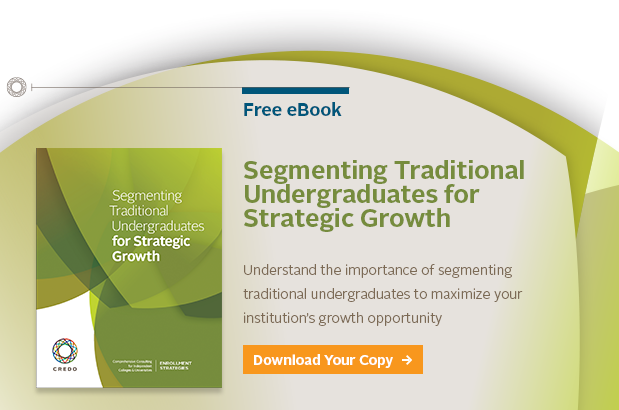
July 26 2010
Assume you have an inquiry pool of 10,000 students. How should admission staff engage in recruiting those students? One approach is for staff to engage all 10,000 students in the same manner. In this scenario, each student is treated as having the same chance (or probability) of enrolling. The benefit to this approach is that it is quick, simple, and easy to manage. The downside to the approach is that is costly, labor intensive, and has the potential to be uninformed.
A better approach would be to identify a process that can highlight which inquiries are the most likely to enroll. Predictive modeling is designed to highlight inquiries that are the most likely to enroll. It is possible to “model” any number of relationships, and in the present example, modeling an inquiry’s likelihood to enroll is the focus; however, modeling applicant to enroll, or even enroll to graduate is feasible and worthwhile.
Predictive modeling is a straightforward process. A logistic regression analysis is used in inquiry to enroll models because of the dichotomous nature of enrollment: an inquiry either enrolls at an institution or the inquiry does not enroll. Logistic regression allows for the computation of a probability of enrollment for each inquiry. Inquiries with higher probabilities of enrollment are more likely to enroll. The benefit to this process is it allows for the ranking of inquiries, and recruitment strategies can be developed for inquiries with the highest probability of enrollment, inquiries that are ranked at the middle of the inquiry pool, and inquiries that are ranked at the bottom of the pool.
Directors of Admission can use predictive modeling to redefine communications flow, travel plans, and marketing strategies. Moreover, when used appropriately, predictive modeling assists in growing enrollments.
Next time, I’ll talk about the selection of variables in inquiry to enroll predictive modeling and the types of information predictive models can provide relating to those variables.
Related Blog Posts
Recent Posts
- Richard Dunsworth, J.D., To Receive 12th Annual Courageous Leadership Award December 16 2024
- Meet the 2024 Credo Values Award Recipients August 27 2024
- What is Executive Coaching, Really? June 25 2024
- Credo & The Constructive Dialogue Institute Announce A New Partnership For Higher Education Leadership Development March 7 2024
- Celebrating Women And Gender-Diverse Learners & Leaders February 28 2024
Categories
- Strategy
- Leadership
- Student Success
- Student Success & Retention
- Enrollment
- Pivot
- Strategic Planning
- Leadership Development
- News
- Strategic Enrollment
- Campus Planning and Architecture
- Moving the Needle
- Data
- Research
- Retention
- Campus Master Planning
- Enrollment & Financial Aid
- Academic Programming
- Campus Planning
- Thriving
- Admitted Student Research
- Architecture
- Finance
- Advising
- Admissions




